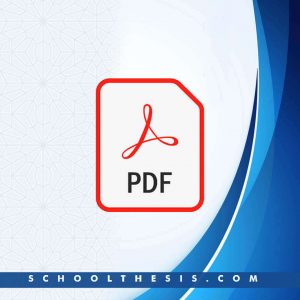
The Effects of the Socratic Method on Students Art Performances in Secondary Schools
Abstract of The Effects of the Socratic Method on Students Art Performances in Secondary Schools
This study was carried out to determine the effects of Socratic Method on student‘s art performance in secondary schools in Kaduna Metropolis Nigeria. The specific objectives are to find out students performance when exposed to Socratic Method, determine if male students will perform better than female students when exposed to the Socratic Method, and determine if Socratic Method would have any effect on students performance in fine arts in both private and public schools. The study was a quasi-experimental design where pre-test and post-test control and experimental group was used. Forty (40) fine arts students (boys and girls) from four selected secondary schools were involved in the study. Simple random sampling was used to select the students. The instrument used for the study was a self-designed Art Appreciation Test (AAT) consisted of twenty (20) multiple choice items which was administered personally by the researcher for the collection of data. Obtained data was analyzed in frequency and percentage. The major findings obtained revealed that students perform better in fine art when taught using Socratic Method as compared to the conventional method. Female students are better in fine art performance when taught using Socratic Method. Private schools perform better than public schools when taught using Socratic Method. Based on the findings from the study, it was concluded that Students perform better in art when taught using Socratic Method as compared to conventional method. It was recommended that the teaching of art would be highly effective if art teachers start to use innovative teaching techniques such as Socratic Method to enhance the cognitive performance of art students.
Chapter One of The Effects of the Socratic Method on Students Art Performances in Secondary Schools
Introduction
Background of the Study
The National Policy on Education (NPE, 2007) presents the visual arts as a core subjects at the junior secondary school level, but made it optional to student at the senior secondary school level. The Government of the Federal Republic of Nigeria realizes the importance of art and culture in the development of science and technology and gives visual art education its legitimate right in the nation‘s educational system. The visual arts curriculum is an integration of visual arts, drama and music and is primarily concerned with the role of arts and culture in education at present and future. At the junior secondary school level it is called Cultural and
Creative Arts. It is made up of drawing, painting, pattern and design, 3-dimentional works, crafts and art appreciation.
Arts subjects constitute a major part of the subjects being offered in most post-primary institutions in Nigeria today. These subjects are so important that the Federal Government National Policy on Education states in specific terms that the Secondary education shall provide trained manpower in the arts, sciences and technology. The National Policy on Education further states that art is core at junior secondary school and elective at senior secondary schools. The importance attached to art by the Federal Government could be due to the general belief that art is capable of improving and changing skills, attitudes and cognition by increasing student‘s store of knowledge‘s about themselves, their environment and their world.

